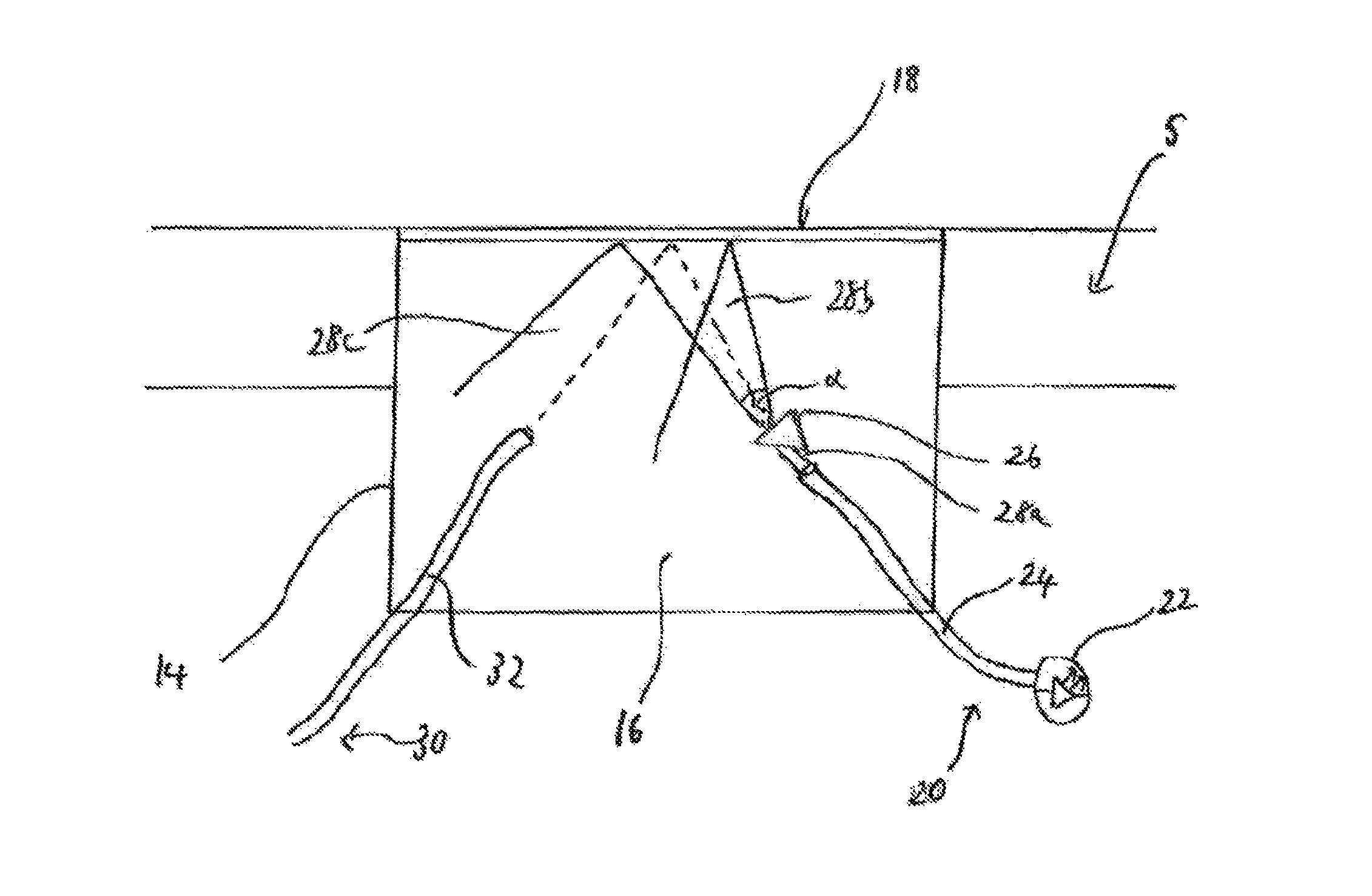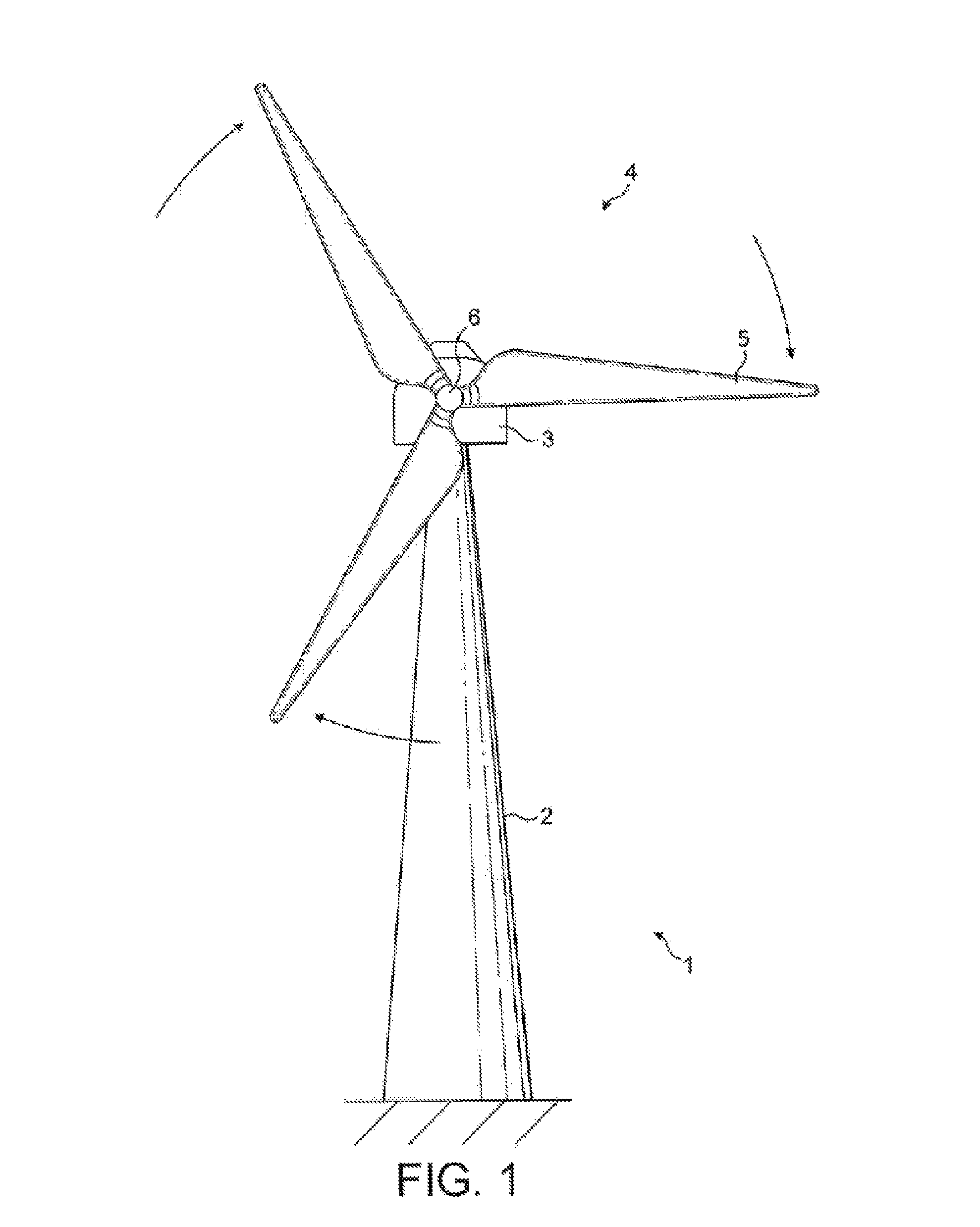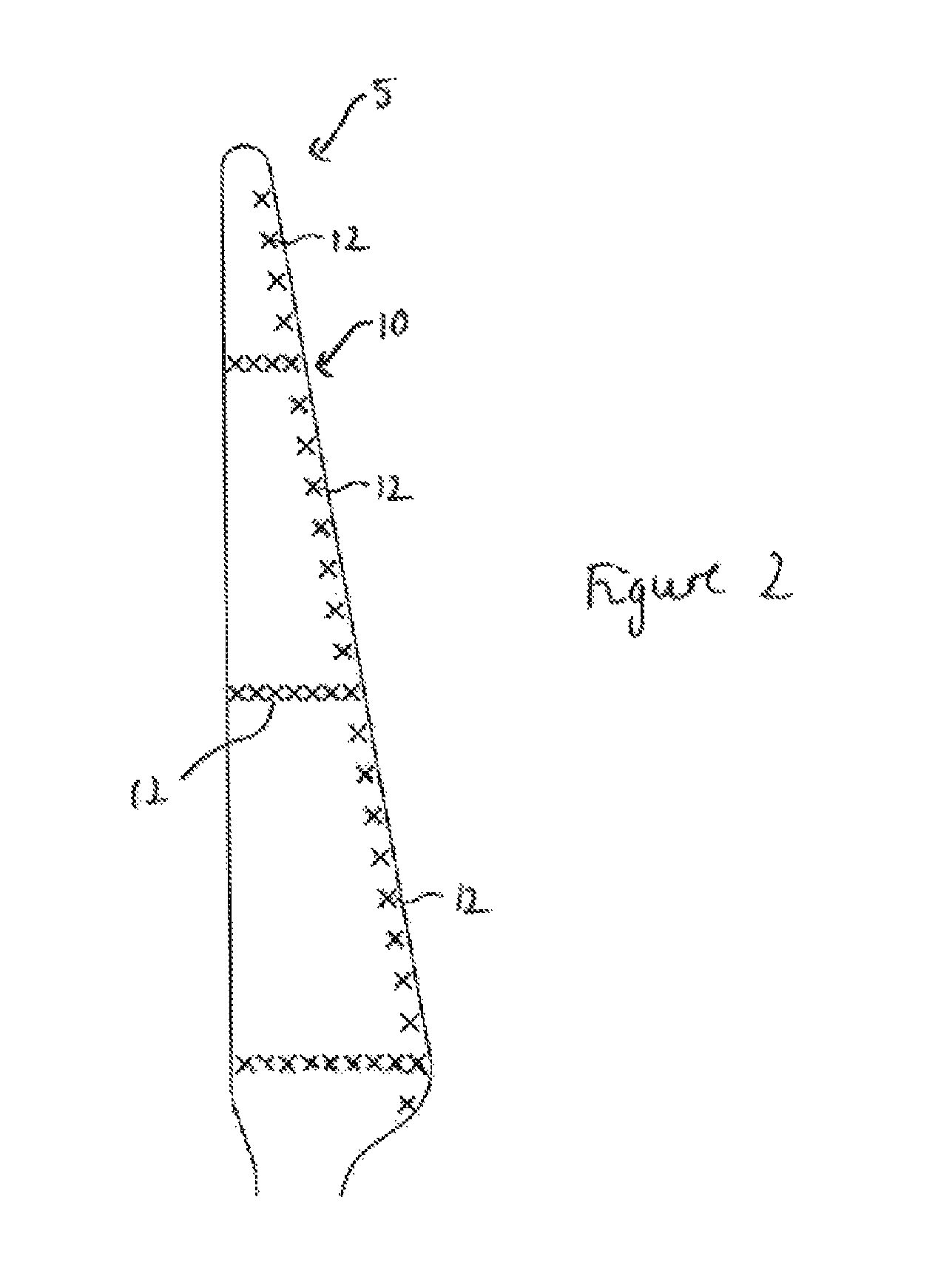Wind turbine including optical sensor system
a sensor system and wind turbine technology, applied in the direction of motors, engine fuctions, sustainable buildings, etc., can solve the problems of recurring operational problems, lightning conductors that cannot protect sensor equipment mounted on or in wind turbine components, and sensor systems incorporating metallic components such as wiring and circuits are particularly susceptible to damage, so as to minimise turbulence and maximise the output power of the wind turbine
- Summary
- Abstract
- Description
- Claims
- Application Information
AI Technical Summary
Benefits of technology
Problems solved by technology
Method used
Image
Examples
Embodiment Construction
[0080]FIG. 1 illustrates a wind turbine 1 according to the invention comprising a wind turbine tower 2 on which a wind turbine nacelle 3 is mounted. A wind turbine rotor 4 comprising three wind turbine blades 5 is mounted on a hub 6. The hub 6 is connected to the nacelle 3 through a low speed shaft (not shown) extending from the nacelle front. The wind turbine of FIG. 1 may be a small model intended for domestic or light utility usage, or may be a large model such as those that are suitable for use in large scale electricity generation on a wind farm. In the latter case, the diameter of the rotor may be as large as 100 meters or more.
[0081]Each wind turbine blade 5 incorporates a sensor system 10 comprising a plurality of turbulence sensors 12 spaced apart along the blade, as illustrated in FIG. 2 which shows a view of the leeward side of the blade 5. Turbulence sensors 12, as described in more detail below, are disposed along the surface of the blade 5 at a plurality of locations. ...
PUM
 Login to View More
Login to View More Abstract
Description
Claims
Application Information
 Login to View More
Login to View More - R&D
- Intellectual Property
- Life Sciences
- Materials
- Tech Scout
- Unparalleled Data Quality
- Higher Quality Content
- 60% Fewer Hallucinations
Browse by: Latest US Patents, China's latest patents, Technical Efficacy Thesaurus, Application Domain, Technology Topic, Popular Technical Reports.
© 2025 PatSnap. All rights reserved.Legal|Privacy policy|Modern Slavery Act Transparency Statement|Sitemap|About US| Contact US: help@patsnap.com



